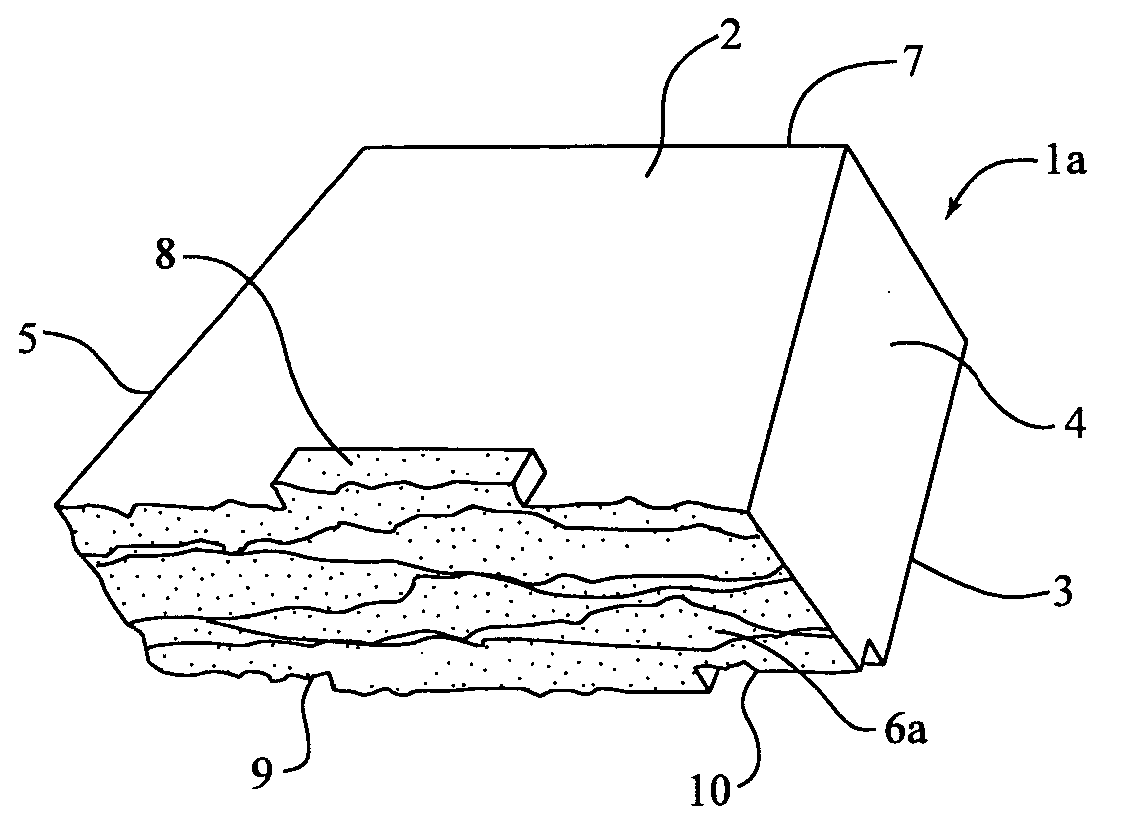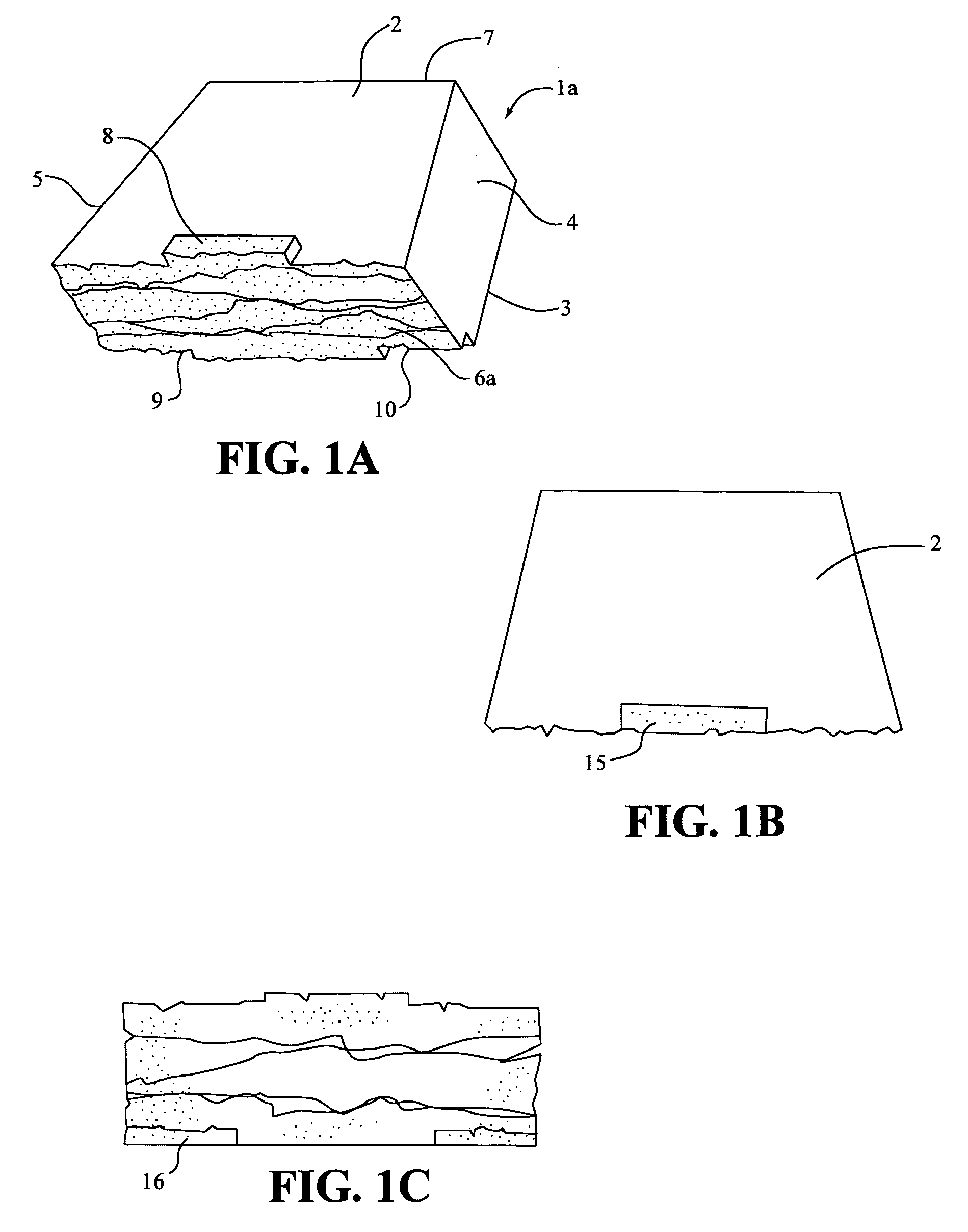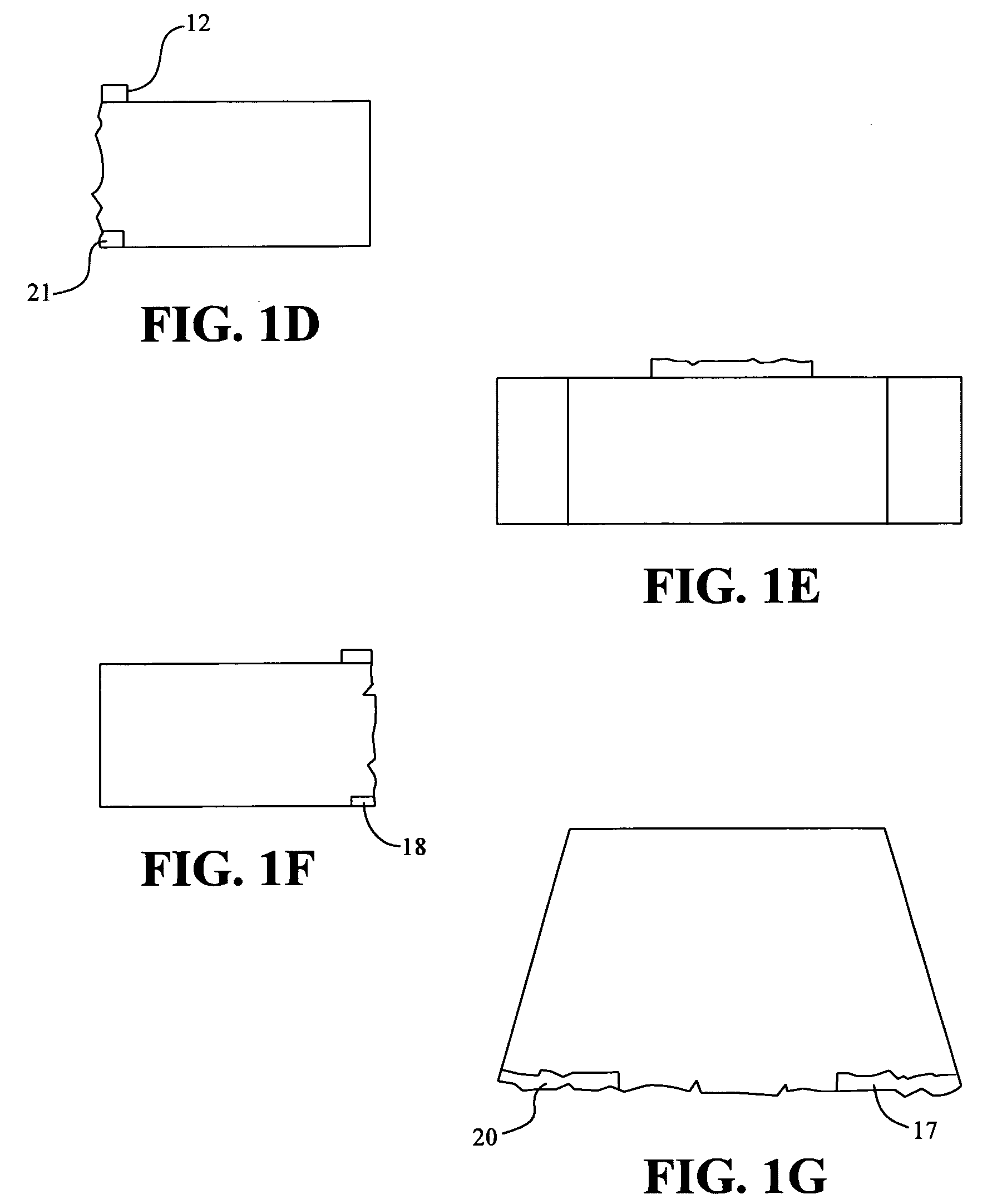Retaining wall block with face connection
a technology of face connection and retaining wall, which is applied in the field of retaining wall blocks, can solve the problems of visible line or seam between, disadvantages of prior art continuous front flanged blocks, and difficulty in forming smooth inside or outside curves in walls formed from blocks
- Summary
- Abstract
- Description
- Claims
- Application Information
AI Technical Summary
Benefits of technology
Problems solved by technology
Method used
Image
Examples
first embodiment
[0042] The single block wall system is shown in FIGS. 1 to 5. the block is shown in FIGS. 1A to 1G which illustrate perspective, top, front, right side, back, left side and bottom views, respectively, of block 1a. Block la has a top surface 2 which is substantially parallel to a bottom surface 3, nonparallel first and second side wall surfaces 4 and 5, and a front face 6a which is substantially parallel to a rear surface 7.
[0043] The front face 6a and rear surface 7 each extend from top surface 2 to bottom surface 3. First and second side surfaces 4 and 5 extend from top surface 2 to bottom surface 3 and from front face 6a to rear surface 7. The top and bottom surfaces, side surfaces, front face and rear surface collectively define a block body. The size of the bocks may be similar to presently used retaining wall blocks. By way of non limiting example the blocks may be between 12-18 inches wide, 7-12 inches deep and 3-8 inches in height. Block 1a is generally symmetrical about a ve...
second embodiment
[0052] the single block system is shown in FIGS. 4 and 5. Block 1b is similar in all respects to block 1a except that the front face 6b is provided with an ashlar surface pattern instead of the ledgestone pattern of front face 6a. The description of the various features of block 1a and the construction of a retaining wall therefrom are applicable with respect to block 1b and will not be repeated. The only significant difference between blocks 1a and 1b is the front face contour and the appearance which is created when the blocks are used to construct a retaining wall.
[0053] A retaining wall constructed with blocks 1b is shown in FIG. 5. In accordance with the discussion regarding the manufacture of block 1a with up to four different surface configurations FIG. 5, for purposes of illustration, shows a partial retaining wall constructed from blocks 1b showing only the surface configurations of four potential surface contours of block 1b. Construction of the wall in its intended manner...
PUM
 Login to View More
Login to View More Abstract
Description
Claims
Application Information
 Login to View More
Login to View More - R&D
- Intellectual Property
- Life Sciences
- Materials
- Tech Scout
- Unparalleled Data Quality
- Higher Quality Content
- 60% Fewer Hallucinations
Browse by: Latest US Patents, China's latest patents, Technical Efficacy Thesaurus, Application Domain, Technology Topic, Popular Technical Reports.
© 2025 PatSnap. All rights reserved.Legal|Privacy policy|Modern Slavery Act Transparency Statement|Sitemap|About US| Contact US: help@patsnap.com



